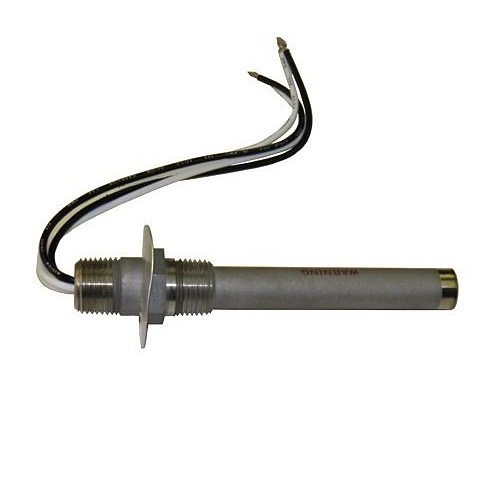
Kidde Fenwal 12-E28021-005-05-0T DETECT-A-FIRE Vertical Detector, 225°F (107°C), Stainless-Steel Coupling Head, Close on Rise
Kidde Fenwal 12-E28021-005-05-0T DETECT-A-FIRE Vertical Detector, 225°F (107°C), Stainless-Steel Coupling Head, Close on Rise
Kidde Fenwal 12-E28021-005-05-0T DETECT-A-FIRE Vertical Detector, 225°F (107°C), Stainless-Steel Coupling Head, Close on Rise
28021-5 | FN-E28021005
Please sign in to view pricing and availability and to add to cart.
Product Overview
DETECT-A-FIRE® (D-A-F) detectors are the "heart" of many fire protection systems. The highly reliable D-A-F has been the standard for over 75 years. The D-A-F is used for signaling overheat or fire conditions. In the vast majority of applications, the D-A-F provides the initial heat sensing that is used to activate suppression systems using clean agent, CO2, inert gases, wet or dry chemicals or water.
D-A-F detectors are widely accepted, because they are designed with rate compensation. This provides a unique advantage over both fixed temperature and rate-of-rise types of detectors because the D-A-F detector accurately senses the surrounding air temperature regardless of the fire growth rate. At the pre-determined set point, the system is activated.
Fixed temperature detectors must be completely heated to alarm temperature and therefore a lag in response time may occur with a fast rate fire. Rate-of-rise devices, on the other hand, are triggered by the rate of increase in ambient temperature and are subject to false alarms caused by harmless, transient thermal gradients such as the rush of warm air from process ovens.
The key to the detector's sensitivity is in the design (Figure 1). The outer shell is made of a rapidly expanding alloy which closely follows changes in surrounding air temperature. The inner struts are made of a slower expanding alloy. Designed to resist thermal energy absorption and sealed inside the shell, the struts follow temperature changes more slowly.
A slow rate fire (Figure 2) will heat the shell and struts together. At the "set point" , the detector will trigger, actuating the alarm or releasing the extinguishant.
A transient rush of warm air up to 40°F/min. may expand the shell, while not triggering the detector. By ignoring transient warm air excursions, the D-A-F detector virtually eliminates false alarms prevalent with rate-of-rise devices.
If a fast rate fire (Figure 3) starts, the shell will expand rapidly. The struts will close, actuating the alarm and/or releasing the agent. The faster the fire rate of growth, the sooner the D-A-F detector will react.
Main Features
- Repeatable - self-restoring, nothing to replace, testable
- Versatile - various temperature settings available
- Durable - long lasting stainless steel shell
- Economical - wide spacings reduce installation costs
- Factory set
- Internal contact area hermetically sealed in stainless steel shell
- ROHS Compliant
General Information
Specifications
-
ADI Part Number FN-E28021005 Brand Name Kidde Fenwal Manufacturer Carrier Manufacturer Part Number 12-E28021-005-05-0T Product Model 28021-5 Product Name 28021-5 Smoke Detector Product Type Smoke Detector
-
Connectivity Technology Wired Detectable Medium Fire
-
Application/Usage Engine Compartment, Factory, Gas Station, Library, Office, Paint Spray Booth, Power Generation, Range Hood, School Color Silver Form Factor Box Mount Material Stainless Steel
-
Input Voltage 125V AC, 125V DC Input Voltage (V AC) 125 Input Voltage (V DC) 125 Power Source AC, DC
-
Environmental Certification RoHS Environmentally Friendly Yes

